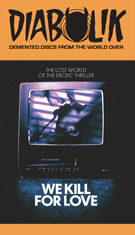
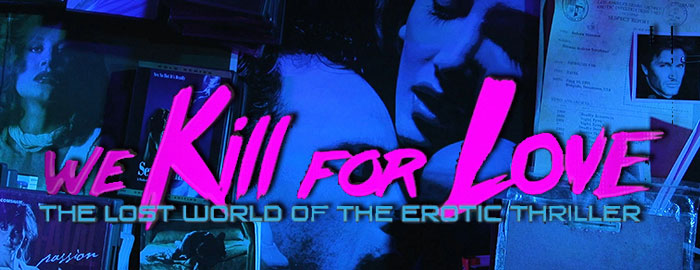
Color, 2023, 169 mins. 25 secs.
Directed by Anthony Penta
Starring Andrew Stevens, Monique Parent, Amy Lindsay, Linda Ruth Williams, Kira Reed Lorsch, Jim Wynorski, Fred Olen Ray
Yellow Veil Pictures (Blu-ray) (US RA HD) / WS (1.78:1) (16:9)
In the 1990s, it was 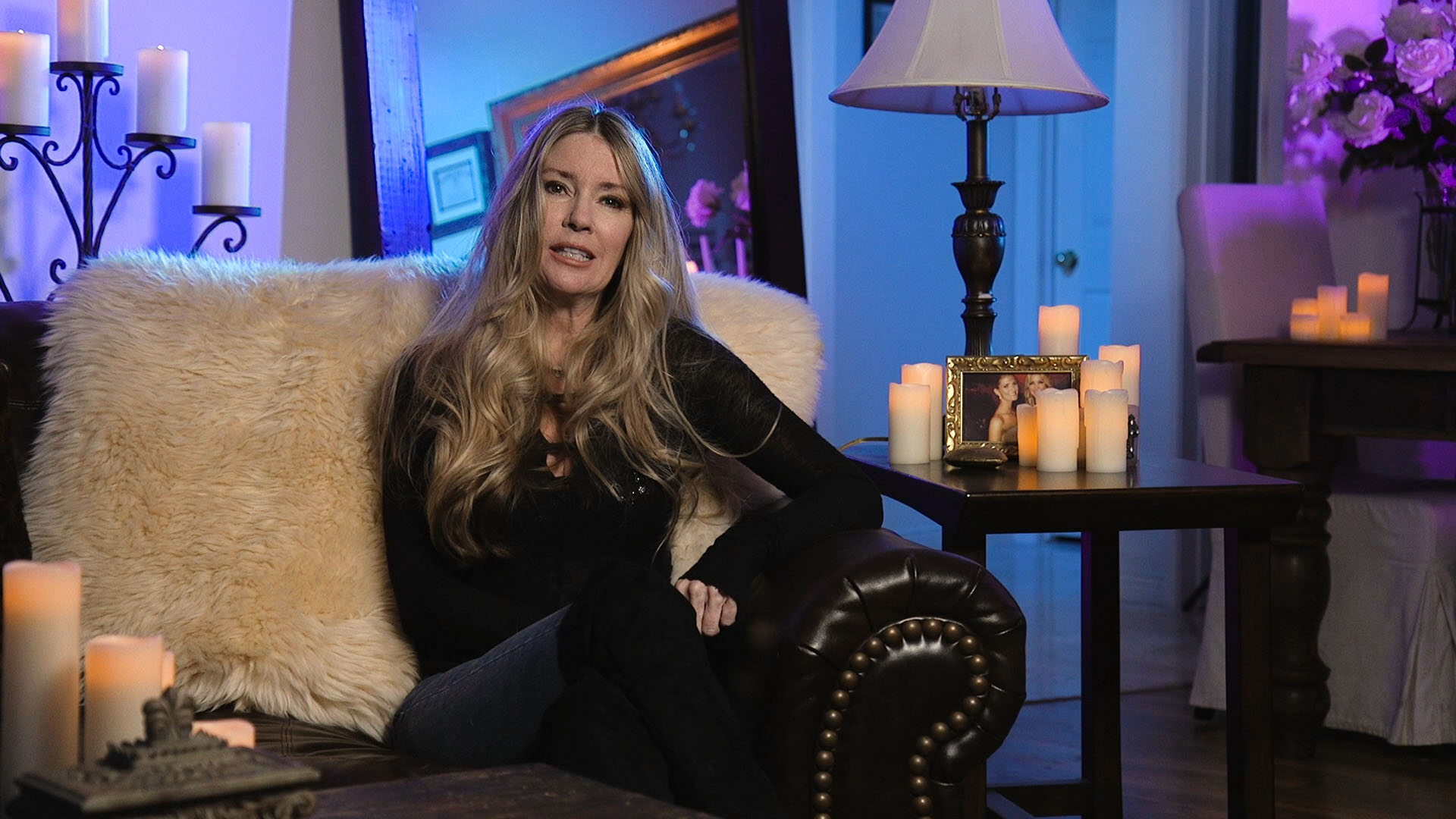 impossible to walk into a video store, be it a big chain or a small mom and pop outfit, without stumbling
impossible to walk into a video store, be it a big chain or a small mom and pop outfit, without stumbling 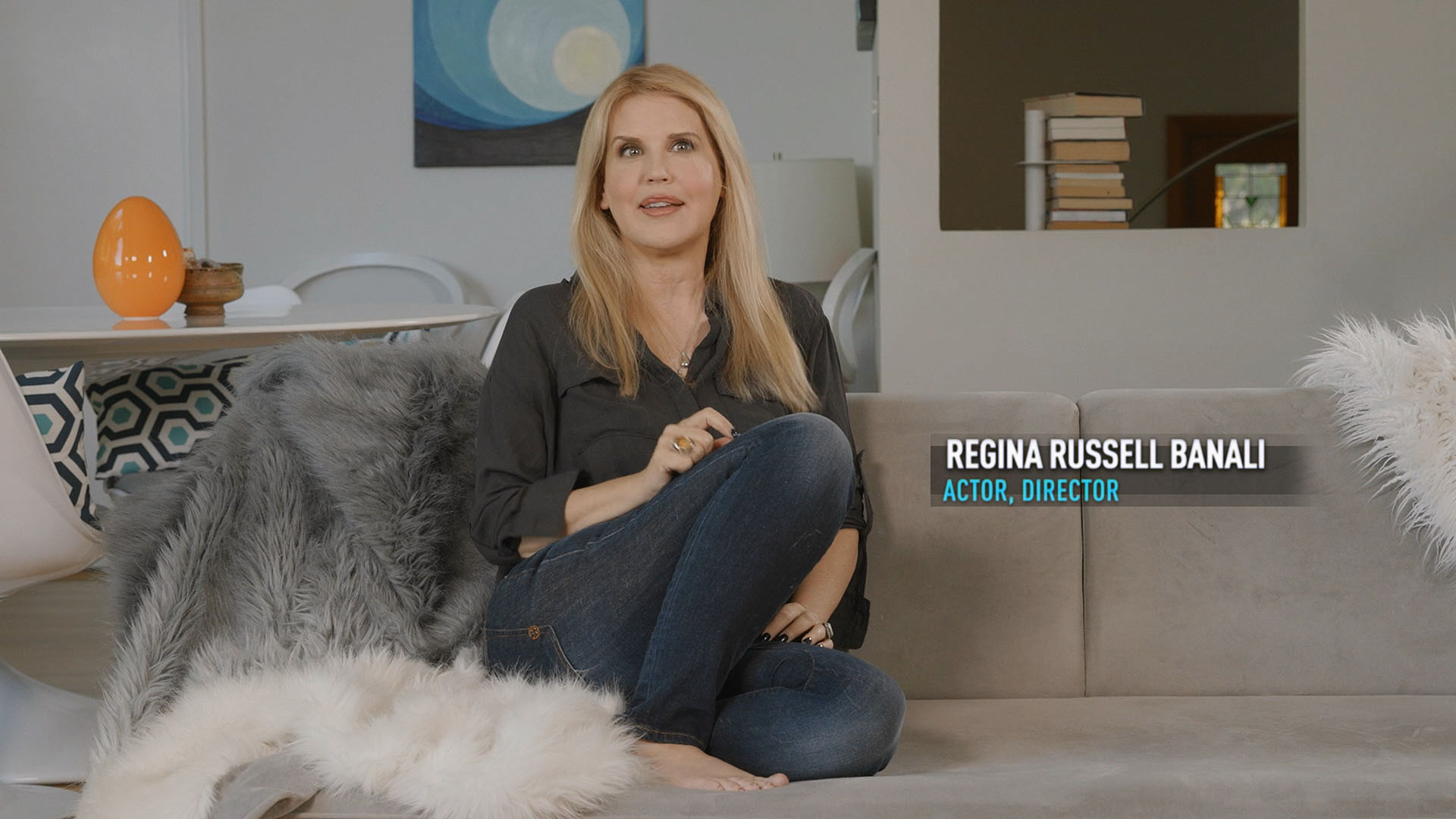 across at least a dozen sexy suspense films staring at you in the new release section. Every year seemed to bring dozens of new, direct-to-VHS films with stars like Shannon Tweed, Andrew Stevens, Tanya Roberts, or tons of other names, with titles like seemed like random combinations of words like "instinct," "indecent," "exposure," "animal," "fatal," and "bedroom." While the cowardly Blockbuster Video only stocked the R-rated versions of most of these films, other stores had the spicier unrated versions guaranteed to feature a few extra minutes of moaning and grinding to ensure you got your money's worth. Exactly how this subgenre of what became known as the erotic thriller got started has been the subject of debate for ages now with various Hollywood hits from the '80s being the most likely cause (more on that below), but what's indisputable is that these were very popular and wildly entertaining staples of any VHS hound's diet before they quietly died out somewhere in the early '00s. The vast majority of these films have somehow slid into oblivion, never seeing the light of day again after their initial VHS (and sometimes laserdisc) releases and long gone from any kind of cable TV play. Furthermore, they haven't really had a chance to build up any following as opposed to the various international strains of horror films, westerns, and even adult titles during the Blu-ray era, with only a few scant written studies devoted to their existence. Aiming to fill that void is the mammoth documentary We Kill for Love: The Lost World of the Erotic Thriller, a combination of "we were there" testimony from the actors and filmmakers of the era mixed with scholarly observations from a variety of film critics pinpointing their appeal and pop culture significance. It's a very welcome salute to these films, which were often lumped in with the more established "Skinemax" strain of softcore entertainment but really had a personality all their own.
across at least a dozen sexy suspense films staring at you in the new release section. Every year seemed to bring dozens of new, direct-to-VHS films with stars like Shannon Tweed, Andrew Stevens, Tanya Roberts, or tons of other names, with titles like seemed like random combinations of words like "instinct," "indecent," "exposure," "animal," "fatal," and "bedroom." While the cowardly Blockbuster Video only stocked the R-rated versions of most of these films, other stores had the spicier unrated versions guaranteed to feature a few extra minutes of moaning and grinding to ensure you got your money's worth. Exactly how this subgenre of what became known as the erotic thriller got started has been the subject of debate for ages now with various Hollywood hits from the '80s being the most likely cause (more on that below), but what's indisputable is that these were very popular and wildly entertaining staples of any VHS hound's diet before they quietly died out somewhere in the early '00s. The vast majority of these films have somehow slid into oblivion, never seeing the light of day again after their initial VHS (and sometimes laserdisc) releases and long gone from any kind of cable TV play. Furthermore, they haven't really had a chance to build up any following as opposed to the various international strains of horror films, westerns, and even adult titles during the Blu-ray era, with only a few scant written studies devoted to their existence. Aiming to fill that void is the mammoth documentary We Kill for Love: The Lost World of the Erotic Thriller, a combination of "we were there" testimony from the actors and filmmakers of the era mixed with scholarly observations from a variety of film critics pinpointing their appeal and pop culture significance. It's a very welcome salute to these films, which were often lumped in with the more established "Skinemax" strain of softcore entertainment but really had a personality all their own.
Following an extended mood-setting prologue, we dive into the origins of the movement with Alfred Hitchcock and classic film noir including Double Indemnity and its 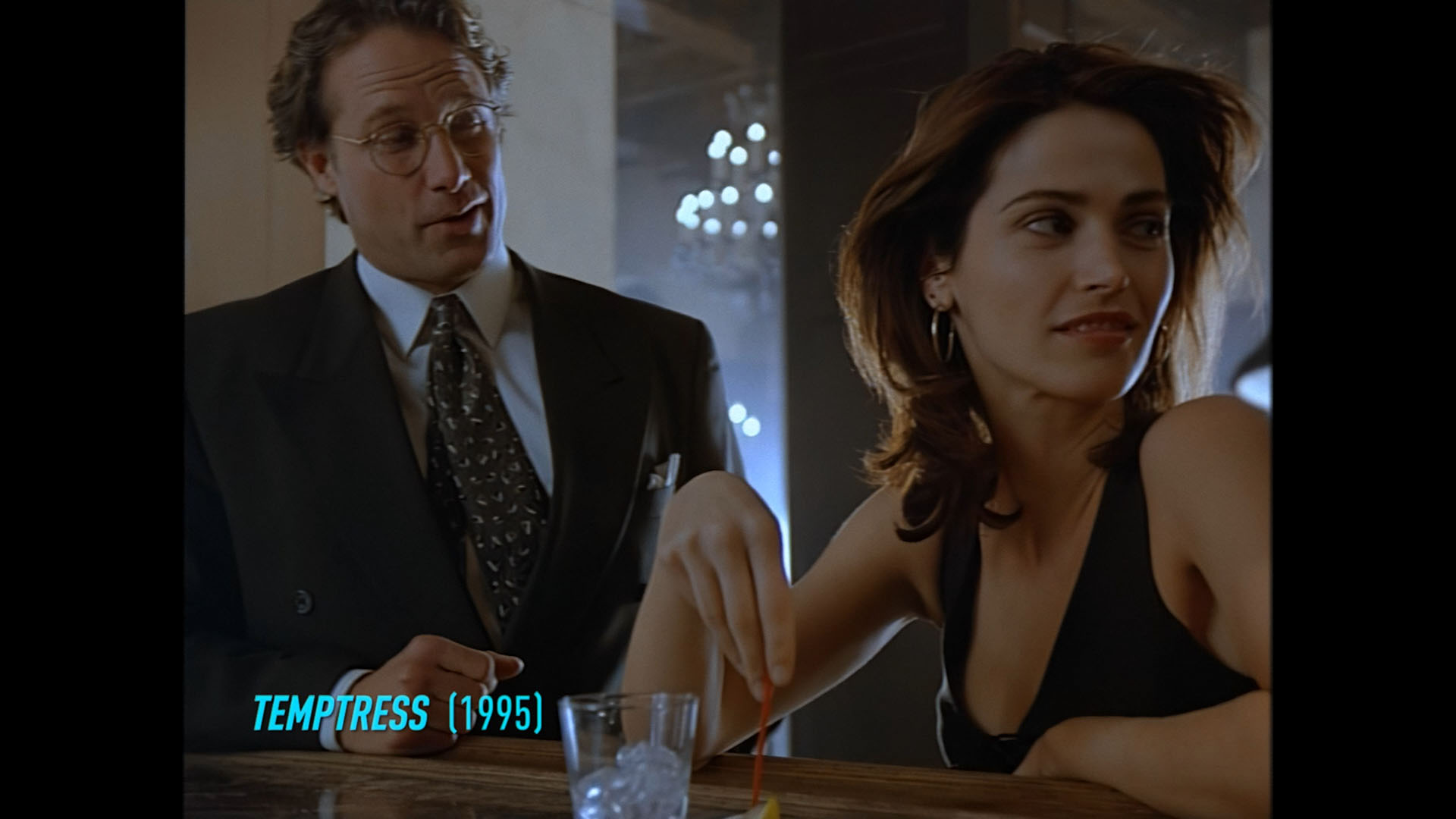 progeny, most set in Los Angeles in a world of shadowy upper class homes and endless duplicity. From there we tour through the tropes like spinning fans
progeny, most set in Los Angeles in a world of shadowy upper class homes and endless duplicity. From there we tour through the tropes like spinning fans 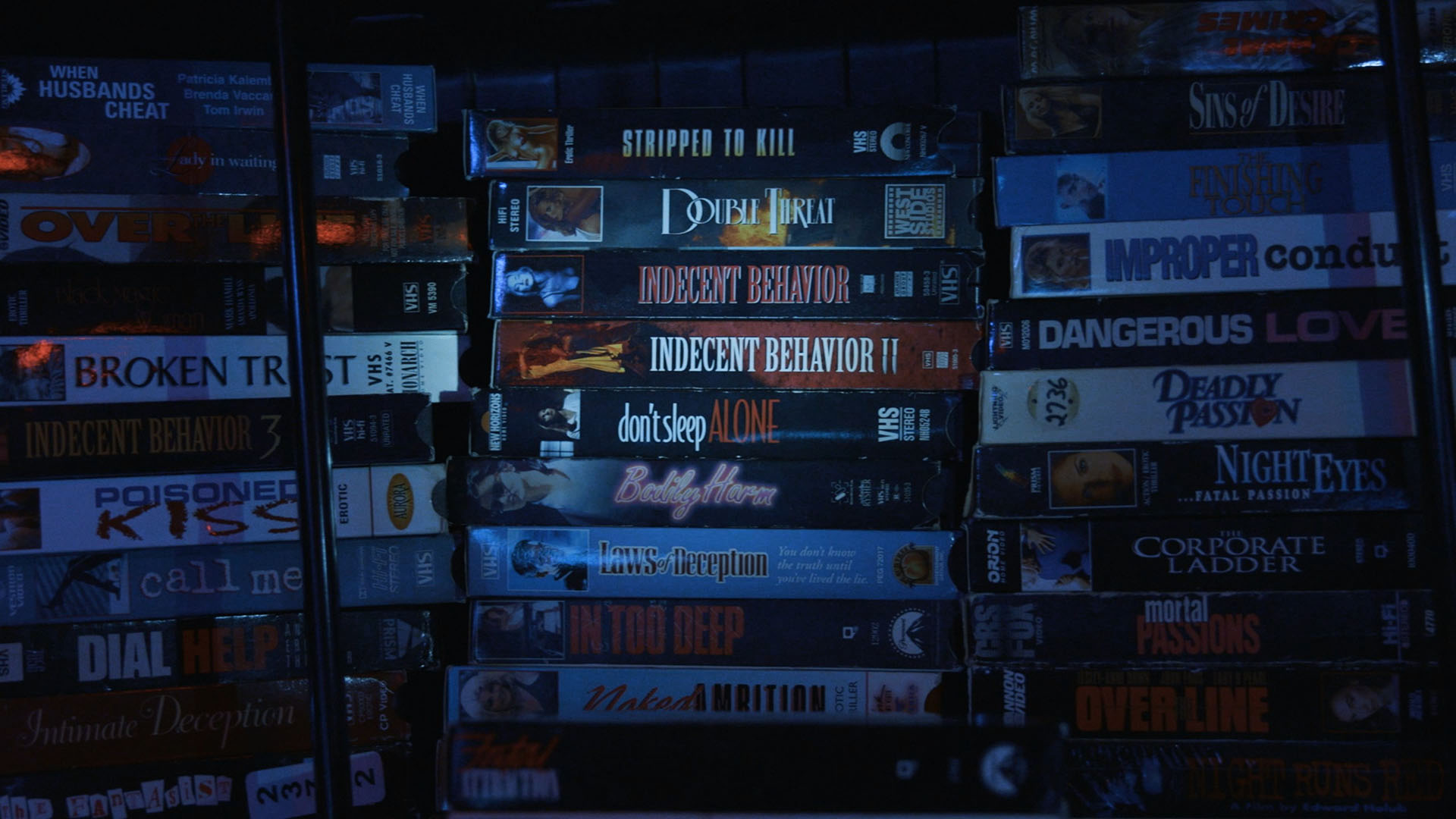 and sweaty bodies, most trapped in a fatalistic web of American greed and lust. Some of the participants have a welcome specificity, such as director Rodman Flender explaining the process behind creating 1992's In the Heat of Passion, and though the mission statement at the beginning points out that this is focused on the indie erotic thrillers that proliferated on VHS, you do get nods to some of the heavy hitters like Dressed to Kill, Body Heat, Fatal Attraction, Basic Instinct, and Thief of Hearts. There's also quite a bit of burrowing into the social anxieties of the time including post-Reagan political tensions, the attitudes of single and married working women, and much more. One of the big players on the VHS scene, Andrew Stevens, is a highlight here explaining how his lead role in 1982's then-maligned The Seduction paved the way for his days as '90s erotic thriller royalty behind the scenes with hits like Night Eyes. Of course you get reliables like Fred Olen Ray and Jim Wynorski reflecting on their films, a look at the baffling string of pseudonyms and alternate titles, scene stealers like Ross Hagen, and the tropes of the female-driven Gothic repurposed for modern consumption like Illicit Dreams. The doc also nods to related pop culture elements like Playboy and TV shows like Red Shoe Diaries, giving a snapshot of an era that seems 180 degrees away from where we are now.
and sweaty bodies, most trapped in a fatalistic web of American greed and lust. Some of the participants have a welcome specificity, such as director Rodman Flender explaining the process behind creating 1992's In the Heat of Passion, and though the mission statement at the beginning points out that this is focused on the indie erotic thrillers that proliferated on VHS, you do get nods to some of the heavy hitters like Dressed to Kill, Body Heat, Fatal Attraction, Basic Instinct, and Thief of Hearts. There's also quite a bit of burrowing into the social anxieties of the time including post-Reagan political tensions, the attitudes of single and married working women, and much more. One of the big players on the VHS scene, Andrew Stevens, is a highlight here explaining how his lead role in 1982's then-maligned The Seduction paved the way for his days as '90s erotic thriller royalty behind the scenes with hits like Night Eyes. Of course you get reliables like Fred Olen Ray and Jim Wynorski reflecting on their films, a look at the baffling string of pseudonyms and alternate titles, scene stealers like Ross Hagen, and the tropes of the female-driven Gothic repurposed for modern consumption like Illicit Dreams. The doc also nods to related pop culture elements like Playboy and TV shows like Red Shoe Diaries, giving a snapshot of an era that seems 180 degrees away from where we are now.
Obviously this is a lot of ground to cover over the course of a feature film, and this one manages to touch most of the bases even if you're left wanting to know more about the audience for these films and what happened to them now. (Weirdly, even many of the big studio entries like Jade, Thief of Hearts, Whispers in the Dark, and Sliver are treated like throwaway garbage now with only their R-rated versions available on Blu-ray and streaming.) There's a wide variety of participants here including Fatal Attraction screenwriter James Dearden, regular Zalman King composer George S. Clinton, actors like Monique Parent, and writers like Linda Ruth Williams and Abbey Bender. Some of this is quite 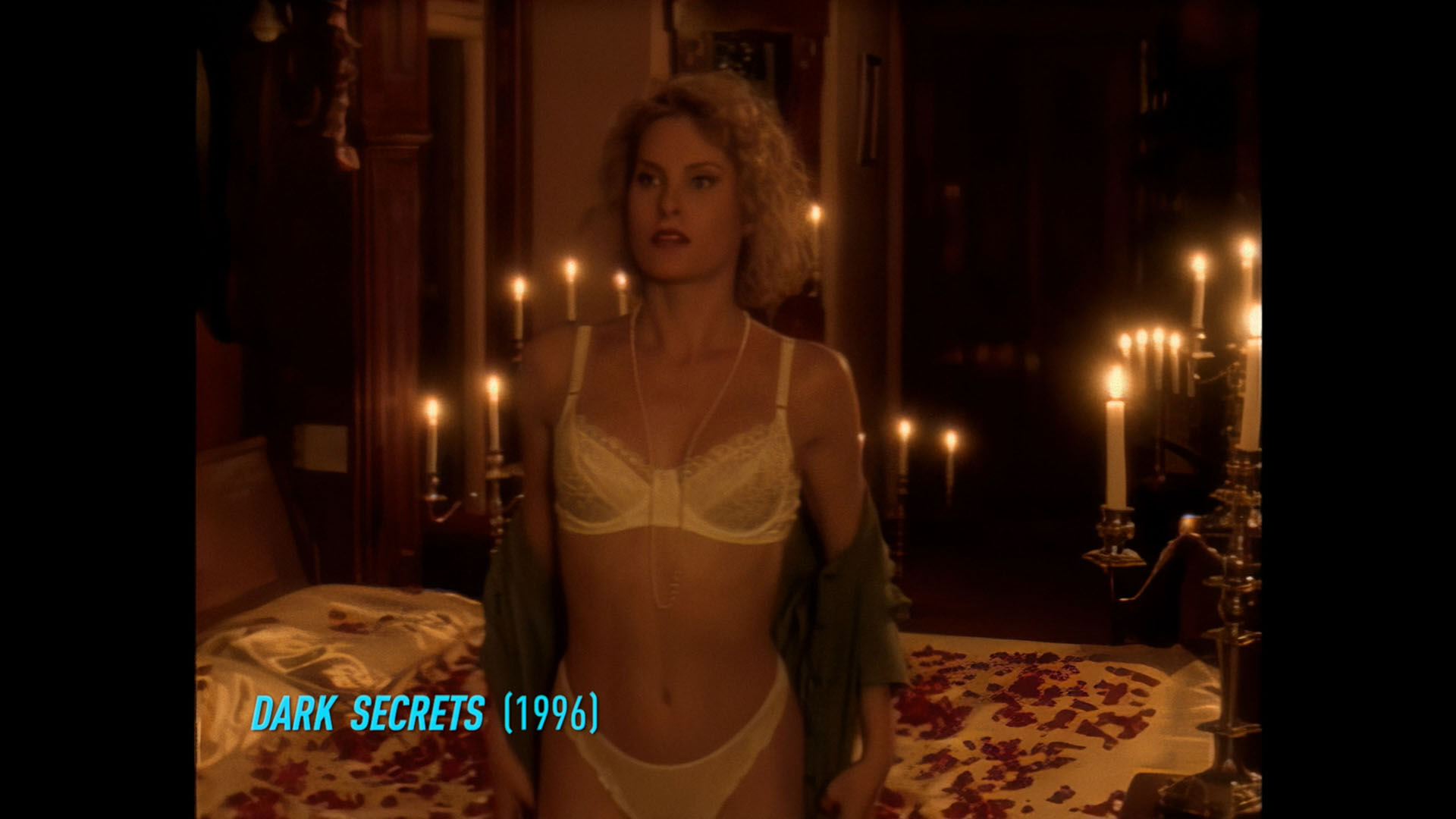 funny as well,
funny as well, 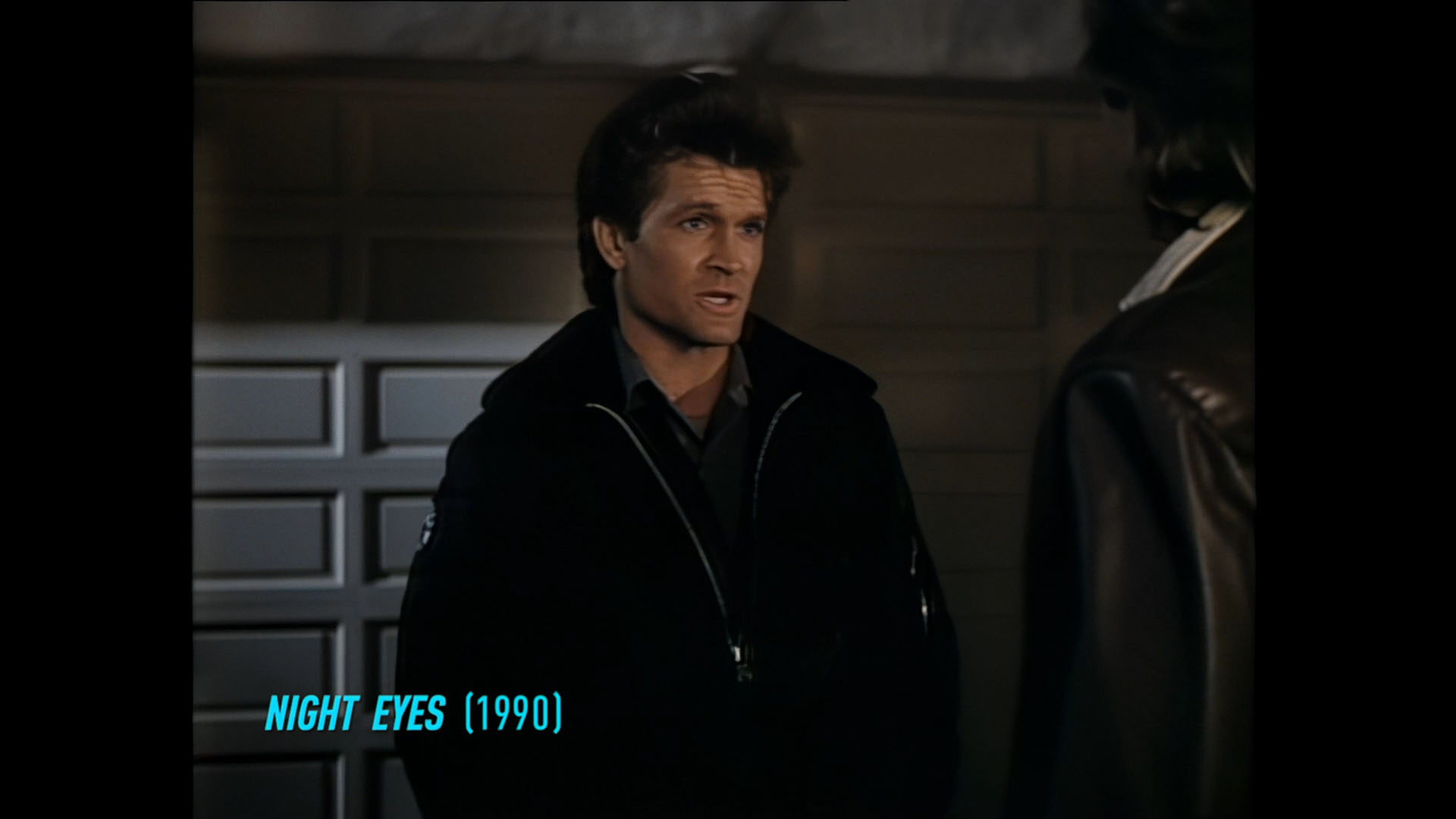 including a great gag involving Stevens tucked away in the end credits.
including a great gag involving Stevens tucked away in the end credits.
The 2023 Blu-ray release of this film from Yellow Veil is likely the first way viewers will be able to encounter this one outside of a festival, and it looks as excellent as you'd expect for a recent digital production. Obviously the barrage of clips varies depending on the source (many existing only on VHS-era masters), but that's nicely handled with some placed inside TV monitors or put into fun multi-screen comparisons of recurring visual tropes. Audio options include DTS-HD MA 2.0 stereo with optional English subtitles, a superfluous 2.0 Dolby Digital track, and an unusual audio commentary separated into separate sections with director Anthony Penta, Travis Woods, Samm Deighan, and Douglas Keesey; they each tackle a different aspect of the topic from the genesis of the project to the film noir influence to gender politics to key players. Obviously it isn't scene specific at all but makes for a fun and logical way to fill the lengthy running time. For some reason the feature itself is split into two parts with a note at the beginning that the length determined this (so the running times show up as 76 mins. 59 secs. and 86 mins. 26 secs.); it's an odd authoring choice but at least they give you a heads up. Also included are six segments of deleted scenes and bonus interviews, which are presented in a final edited form and are at least as substantive as anything in the main feature with topics including the execution of the love scenes, the demographics of the audience, and the viewing habits that started to kick in once these were being churned out at a rate of multiple titles per week. The package also comes with an essay by Justin LaLiberty serving as a handy primer to the erotic thriller and its importance to the home video market.
Reviewed on October 11, 2023



 impossible to walk into a video store, be it a big chain or a small mom and pop outfit, without stumbling
impossible to walk into a video store, be it a big chain or a small mom and pop outfit, without stumbling  across at least a dozen sexy suspense films staring at you in the new release section. Every year seemed to bring dozens of new, direct-to-VHS films with stars like Shannon Tweed, Andrew Stevens, Tanya Roberts, or tons of other names, with titles like seemed like random combinations of words like "instinct," "indecent," "exposure," "animal," "fatal," and "bedroom." While the cowardly Blockbuster Video only stocked the R-rated versions of most of these films, other stores had the spicier unrated versions guaranteed to feature a few extra minutes of moaning and grinding to ensure you got your money's worth. Exactly how this subgenre of what became known as the erotic thriller got started has been the subject of debate for ages now with various Hollywood hits from the '80s being the most likely cause (more on that below), but what's indisputable is that these were very popular and wildly entertaining staples of any VHS hound's diet before they quietly died out somewhere in the early '00s. The vast majority of these films have somehow slid into oblivion, never seeing the light of day again after their initial VHS (and sometimes laserdisc) releases and long gone from any kind of cable TV play. Furthermore, they haven't really had a chance to build up any following as opposed to the various international strains of horror films, westerns, and even adult titles during the Blu-ray era, with only a few scant written studies devoted to their existence. Aiming to fill that void is the mammoth documentary We Kill for Love: The Lost World of the Erotic Thriller, a combination of "we were there" testimony from the actors and filmmakers of the era mixed with scholarly observations from a variety of film critics pinpointing their appeal and pop culture significance. It's a very welcome salute to these films, which were often lumped in with the more established "Skinemax" strain of softcore entertainment but really had a personality all their own.
across at least a dozen sexy suspense films staring at you in the new release section. Every year seemed to bring dozens of new, direct-to-VHS films with stars like Shannon Tweed, Andrew Stevens, Tanya Roberts, or tons of other names, with titles like seemed like random combinations of words like "instinct," "indecent," "exposure," "animal," "fatal," and "bedroom." While the cowardly Blockbuster Video only stocked the R-rated versions of most of these films, other stores had the spicier unrated versions guaranteed to feature a few extra minutes of moaning and grinding to ensure you got your money's worth. Exactly how this subgenre of what became known as the erotic thriller got started has been the subject of debate for ages now with various Hollywood hits from the '80s being the most likely cause (more on that below), but what's indisputable is that these were very popular and wildly entertaining staples of any VHS hound's diet before they quietly died out somewhere in the early '00s. The vast majority of these films have somehow slid into oblivion, never seeing the light of day again after their initial VHS (and sometimes laserdisc) releases and long gone from any kind of cable TV play. Furthermore, they haven't really had a chance to build up any following as opposed to the various international strains of horror films, westerns, and even adult titles during the Blu-ray era, with only a few scant written studies devoted to their existence. Aiming to fill that void is the mammoth documentary We Kill for Love: The Lost World of the Erotic Thriller, a combination of "we were there" testimony from the actors and filmmakers of the era mixed with scholarly observations from a variety of film critics pinpointing their appeal and pop culture significance. It's a very welcome salute to these films, which were often lumped in with the more established "Skinemax" strain of softcore entertainment but really had a personality all their own. progeny, most set in Los Angeles in a world of shadowy upper class homes and endless duplicity. From there we tour through the tropes like spinning fans
progeny, most set in Los Angeles in a world of shadowy upper class homes and endless duplicity. From there we tour through the tropes like spinning fans  and sweaty bodies, most trapped in a fatalistic web of American greed and lust. Some of the participants have a welcome specificity, such as director Rodman Flender explaining the process behind creating 1992's In the Heat of Passion, and though the mission statement at the beginning points out that this is focused on the indie erotic thrillers that proliferated on VHS, you do get nods to some of the heavy hitters like Dressed to Kill, Body Heat, Fatal Attraction, Basic Instinct, and Thief of Hearts. There's also quite a bit of burrowing into the social anxieties of the time including post-Reagan political tensions, the attitudes of single and married working women, and much more. One of the big players on the VHS scene, Andrew Stevens, is a highlight here explaining how his lead role in 1982's then-maligned The Seduction paved the way for his days as '90s erotic thriller royalty behind the scenes with hits like Night Eyes. Of course you get reliables like Fred Olen Ray and Jim Wynorski reflecting on their films, a look at the baffling string of pseudonyms and alternate titles, scene stealers like Ross Hagen, and the tropes of the female-driven Gothic repurposed for modern consumption like Illicit Dreams. The doc also nods to related pop culture elements like Playboy and TV shows like Red Shoe Diaries, giving a snapshot of an era that seems 180 degrees away from where we are now.
and sweaty bodies, most trapped in a fatalistic web of American greed and lust. Some of the participants have a welcome specificity, such as director Rodman Flender explaining the process behind creating 1992's In the Heat of Passion, and though the mission statement at the beginning points out that this is focused on the indie erotic thrillers that proliferated on VHS, you do get nods to some of the heavy hitters like Dressed to Kill, Body Heat, Fatal Attraction, Basic Instinct, and Thief of Hearts. There's also quite a bit of burrowing into the social anxieties of the time including post-Reagan political tensions, the attitudes of single and married working women, and much more. One of the big players on the VHS scene, Andrew Stevens, is a highlight here explaining how his lead role in 1982's then-maligned The Seduction paved the way for his days as '90s erotic thriller royalty behind the scenes with hits like Night Eyes. Of course you get reliables like Fred Olen Ray and Jim Wynorski reflecting on their films, a look at the baffling string of pseudonyms and alternate titles, scene stealers like Ross Hagen, and the tropes of the female-driven Gothic repurposed for modern consumption like Illicit Dreams. The doc also nods to related pop culture elements like Playboy and TV shows like Red Shoe Diaries, giving a snapshot of an era that seems 180 degrees away from where we are now.  funny as well,
funny as well,  including a great gag involving Stevens tucked away in the end credits.
including a great gag involving Stevens tucked away in the end credits.